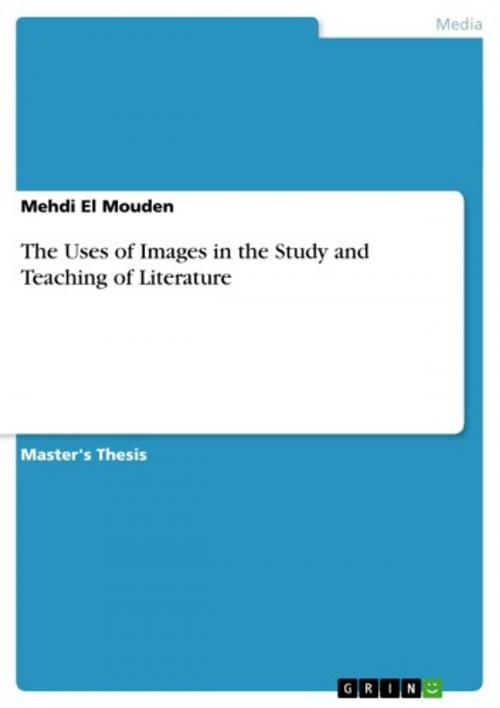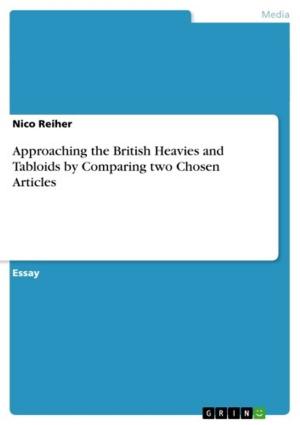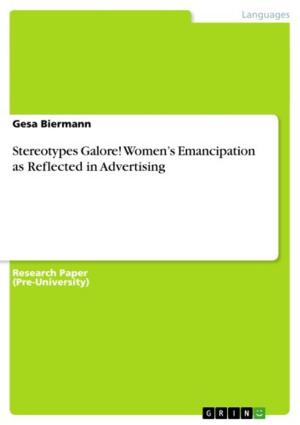The Uses of Images in the Study and Teaching of Literature
Nonfiction, Reference & Language, Education & Teaching, Teaching, Teaching Methods| Author: | Mehdi El Mouden | ISBN: | 9783656053798 |
| Publisher: | GRIN Publishing | Publication: | November 14, 2011 |
| Imprint: | GRIN Publishing | Language: | English |
| Author: | Mehdi El Mouden |
| ISBN: | 9783656053798 |
| Publisher: | GRIN Publishing |
| Publication: | November 14, 2011 |
| Imprint: | GRIN Publishing |
| Language: | English |
Master's Thesis from the year 2008 in the subject Art - Pedagogy, , course: Art - Visual arts general, stylistics, Literature, language: English, abstract: Art is in museums, well protected by walls of critics, ready to rebuke any curious uninformed person about art. Awe and respect are the attitudes required to look at a piece of art; to appreciate its value, one may need knowledge related to history and aesthetics. The cult of the sacred has for long dominated artistic thought to the extent that when people now hear the word 'art', they are afraid to advance any argument in fear to displease the initiated. With such received ideas, art has become more distant to people. The idea that Tolstoy aimed to disseminate about art as constituting the bridge between people's feelings sounds unfeasible at present. The universality that art could demonstrate lingered in museums visited by people from here and there. Such ideas hampered students from getting in touch with works that could offer them other ways of looking and construing the world around them. Alexandre Blok (1906), a Russian painter once said that 'painting teaches one how to look and how to see' (p. 24). Indeed, to look, to see, to perceive, and to observe are different ways of appreciating any work of art. Looking at a picture and pondering about its meaning is observing its traits and perceiving its artistry. Verbs related to sight often entail examination, inspection, scrutiny, study, and appraise. Whether the viewer is initiated to visual literacy or not, the picture grabs his or her attention and impels understanding. No matter how simple or sophisticated the result is, the act is nonetheless productive. Pictures provoke thoughts as words do. Their judicious use in literature teaching may enhance the interpretive abilities of students. This thesis postulates that the use of visual art in the literature class can enhance students' understanding of literary works and movements. It can also trigger imagery and therefore generate interpretations. However, it is important to underline the word 'use' in contrast with the word 'study'. This thesis is mainly concerned with the use of images in literature teaching and learning, but not with the study of images as the latter is often subsumed under an art syllabus. This study analyzes images against works of literature with the purpose of facilitating understanding, spurring imagery, and therefore generating interpretations. Therefore literature is the main focus of study but not art.[...]
Master's Thesis from the year 2008 in the subject Art - Pedagogy, , course: Art - Visual arts general, stylistics, Literature, language: English, abstract: Art is in museums, well protected by walls of critics, ready to rebuke any curious uninformed person about art. Awe and respect are the attitudes required to look at a piece of art; to appreciate its value, one may need knowledge related to history and aesthetics. The cult of the sacred has for long dominated artistic thought to the extent that when people now hear the word 'art', they are afraid to advance any argument in fear to displease the initiated. With such received ideas, art has become more distant to people. The idea that Tolstoy aimed to disseminate about art as constituting the bridge between people's feelings sounds unfeasible at present. The universality that art could demonstrate lingered in museums visited by people from here and there. Such ideas hampered students from getting in touch with works that could offer them other ways of looking and construing the world around them. Alexandre Blok (1906), a Russian painter once said that 'painting teaches one how to look and how to see' (p. 24). Indeed, to look, to see, to perceive, and to observe are different ways of appreciating any work of art. Looking at a picture and pondering about its meaning is observing its traits and perceiving its artistry. Verbs related to sight often entail examination, inspection, scrutiny, study, and appraise. Whether the viewer is initiated to visual literacy or not, the picture grabs his or her attention and impels understanding. No matter how simple or sophisticated the result is, the act is nonetheless productive. Pictures provoke thoughts as words do. Their judicious use in literature teaching may enhance the interpretive abilities of students. This thesis postulates that the use of visual art in the literature class can enhance students' understanding of literary works and movements. It can also trigger imagery and therefore generate interpretations. However, it is important to underline the word 'use' in contrast with the word 'study'. This thesis is mainly concerned with the use of images in literature teaching and learning, but not with the study of images as the latter is often subsumed under an art syllabus. This study analyzes images against works of literature with the purpose of facilitating understanding, spurring imagery, and therefore generating interpretations. Therefore literature is the main focus of study but not art.[...]















